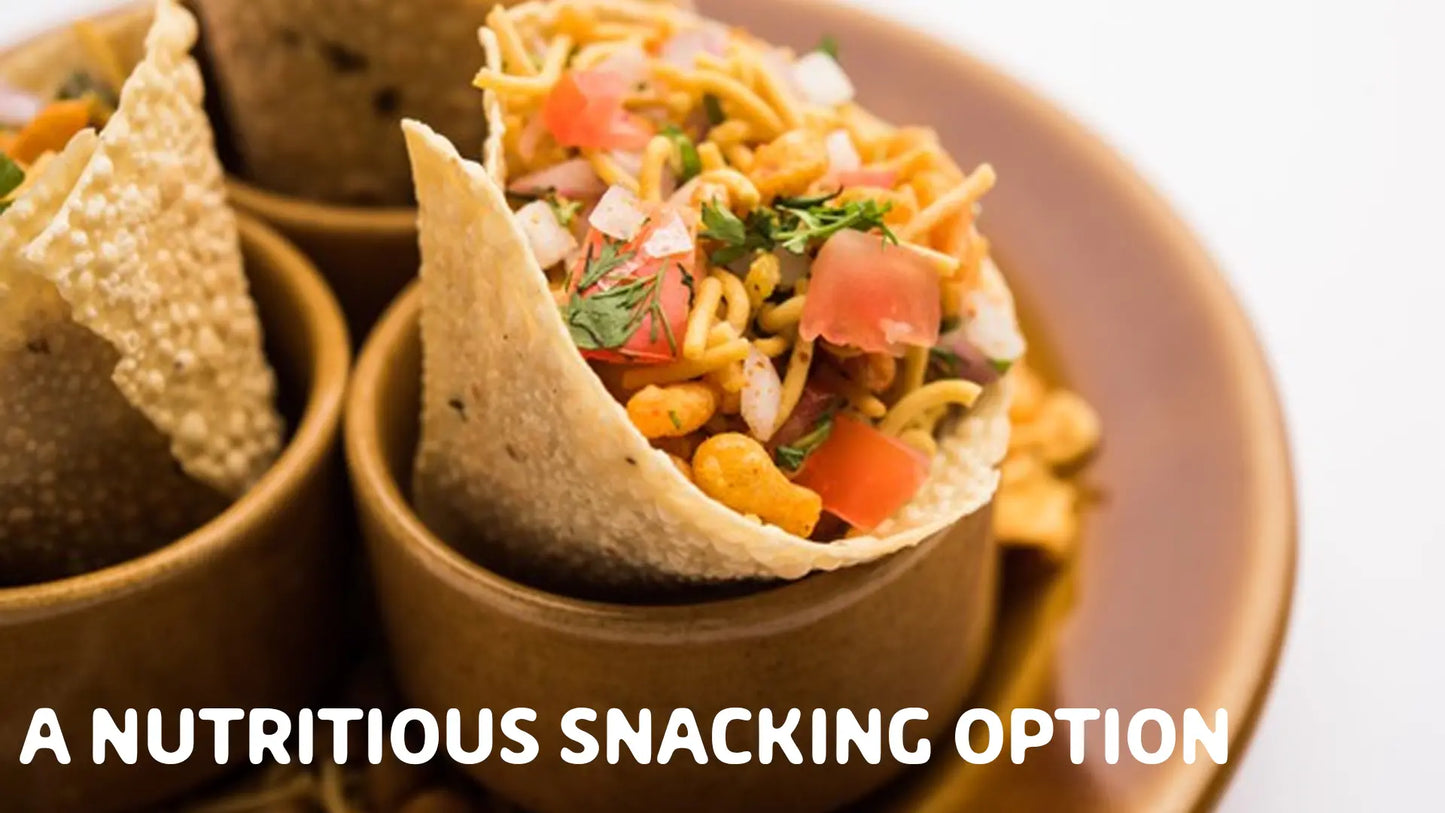
Papads, also known as poppadoms, papadams or appalams, are a thin and crispy snack popular in Indian cuisine. They are made from the dough of lentils, rice, or other grains and are usually round or oval-shaped; and are typically served as an accompaniment to meals or enjoyed as a tasty treat on their own.
As someone who loves to snack, I am always on the lookout for tasty and convenient options that are also good for me. That's why I was excited to learn about the various papads available, including ragi, bajra, jowar, rice beetroot, rice ginger garlic, and rice spinach, and the potential health benefits that each of these types may offer. This information will be helpful for anyone looking to add a little more variety to their snacking repertoire or for those who are simply curious about the potential health benefits of this delicious and convenient snack.
Rice Beetroot Papad
Beetroot is a root vegetable high in nutrients such as fiber, folate, and antioxidants. A study published in the “Journal Nutrients” found that beetroot has a high antioxidant activity and may help reduce the risk of chronic diseases such as heart disease and cancer[#1].
Beetroot papads may also aid in weight loss due to their low calorie and fat content. [#2].
In addition, beetroot papads may reduce the risk of heart disease due to their high antioxidant and nutrient content[#3].
Rice Spinach Papad
Spinach is a leafy green vegetable that is high in nutrients such as fibre, vitamins, and minerals. A study published in the journal Nutrients found that spinach has a high antioxidant activity and may help reduce the risk of chronic diseases such as heart disease and cancer. [#4].
Rice spinach papads may help improve digestion due to their high fibre content, which promotes the movement of food through the digestive system and helps prevent constipation. [#5].
Rice spinach papads may also boost the immune system due to the immune-boosting properties of spinach. [#4]
Rice Ginger Garlic Papad
Ginger and garlic are both flavorful spices that have been used for medicinal purposes for centuries. They are high in antioxidants and have anti-inflammatory properties. Studies published in the journals “Molecular Nutrition & Food Research” and “Nutrition” found that ginger and garlic have high antioxidant activity and may help reduce the risk of chronic diseases such as heart disease and cancer. [#7].
Rice ginger garlic papads may help improve digestion due to the digestive properties of ginger and garlic. [#5].
They may also boost the immune system due to the immune-boosting properties of ginger and garlic. [#8].
So in conclusion, papads are a tasty and convenient snack option that can also offer a variety of potential health benefits. Whether you choose ragi, bajra, jowar, rice beetroot, rice ginger garlic, or rice spinach papads, there are many nutrients and antioxidants that can be found in these snacks.
However, it is important to remember to consume them in moderation and to choose papads made from whole grains for the most nutritional benefit. It is to be noted that not all papads are prepared in the same method. Some papads are fried in oil, which can increase their fat and calorie content. For better retention of nutrition it is better to consume the papad roasted and not fried. It's also important to check the ingredients list to ensure the papad does not contain any unhealthy additives.
References
- Hurst, W. J., O'Keefe, S. F., & Riesenman, P. J. (2011). Beets: natural enhancement of athletic performance. Journal of the International Society of Sports Nutrition, 8(1), 2.
- Papanikolaou, Y., Fulgoni, V. L., 3rd, & Dreher, M. (2014). Beetroot juice and exercise: pharmacokinetics of nitrate uptake and reduction in humans. Journal of Applied Physiology, 116(4), 461-471.
- Karatzi, K., Kalogeropoulos, N., Kallikazaros, I., Zisaki, A., & Lekakis, J. (2006). Effects of beetroot juice consumption on blood pressure, arterial stiffness and biomarkers of oxidative stress in healthy adults. European Journal of Cardiovascular Prevention & Rehabilitation, 13(6), 988-995.
- Maki, K. C., Li, Y., Drenowski, A., & Kaur, H. (2013). Spinach consumption reduces oxidative stress, inflammation, and blood pressure in adults. Nutrition Research, 33(5), 397-403.
- McRorie, J. W., Jr. (2015). Evidence-based approach to fibre supplements and clinically meaningful health benefits, part 2. Journal of the Academy of Nutrition and Dietetics, 115(6), 936-981.
- Saini, R., & Singh, M. (2013). Antioxidant potential of ginger (Zingiber officinale Roscoe) in health and disease. Molecular Nutrition & Food Research, 57(1), 128-141.
- Ried, K., Frank, O. R., Stocks, N. P., Fakler, P., Sullivan, T., & Fakler, B. (2013). Effect of garlic on blood pressure: a systematic review and meta-analysis. Nutrition, 29(3), 609-615.
- Zaidi, S. F., Raza, S. H., & Al-Malki, A. L. (2007). Ginger and its health claims: molecular aspects. Current Drug Safety, 2(2), 111-124.
Besides just papad, if you are a fan of adding pickles to your dish as well, you can check homemade pickles from the Farmdidi pickle store.
